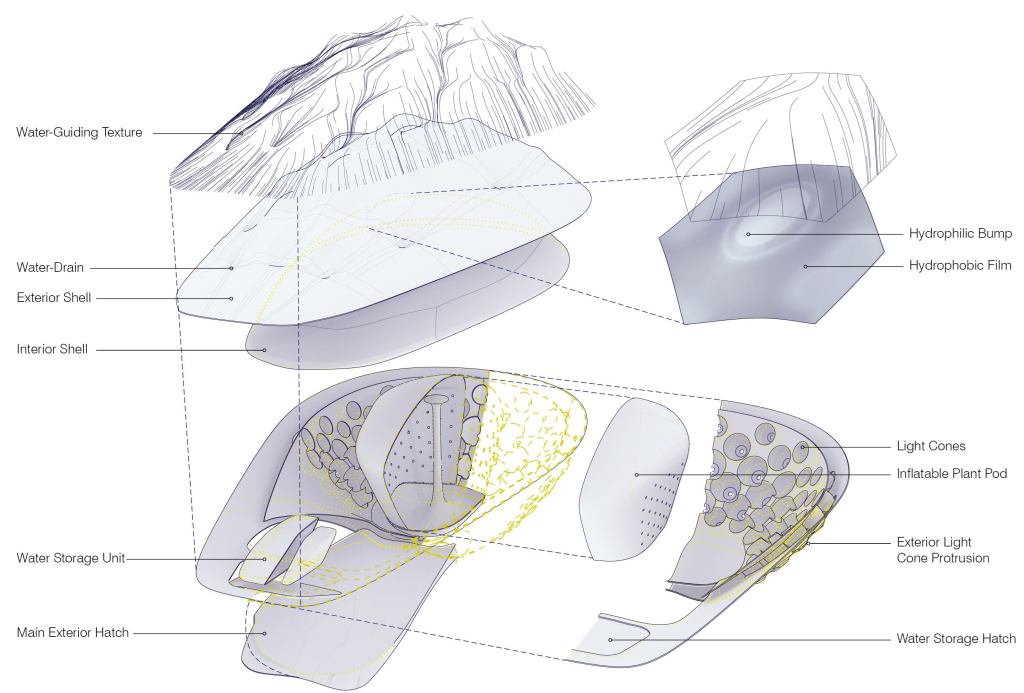This week, light took a mind-bending form and steel got a little lighter. We found a digital tool that is telling construction crews in the U.K. where ancient artifacts might be lurking underfoot and a bio-inspired prototype harvesting hub for after the solar apocalypse.
For their capstone master’s studio at the University of Michigan’s Taubman College of Architecture and Urban Planning, two researchers used parametric design and the process of incremental sheet forming to replicate the passive water-collection properties of the Namib Darkling Beetle’s shell in an architectural application. Their Bug-Out-Bug prototype shelter (above) is designed to harvest sunlight and collect water from the air in humid, hostile environments, in order to support plant life. A reflective finish and eye-level visual break help to camouflage the unit. [Bug-Out-Bug]
- Digging up the past isn’t uncommon during jobsite excavation. In an effort to stave off delays while helping to better preserve archaeological history, U.K. data analytics startup Democrata developed a program for mapping the likely locations of treasures left behind. Currently being used in England and Wales, the tool references information from government documents as well as data on location, former uses of the property, and area animal and plant life. [New Scientist]
M.C. Escher, eat your heart out. The one-sided, single-edged Mobius Strips have largely been an illusory human construction. But physicists at the Max Planck Institute for the Science of Light in Erlangen, Germany, recently found a way to make one out of light. They crossed two polarized laser beams, causing them to twist and bending the light into the continuous form. Applications will likely focus on improving new media optics. [Motherboard]
Researchers at South Korea’s Graduate Institute of Ferrous Technology have developed a form of low-density steel that is lighter, stronger, and more flexible than conventional variations and uses low-cost metals. They now have teamed with multinational steel-maker POSCO to determine whether the product can be scaled. [Phys.org]
